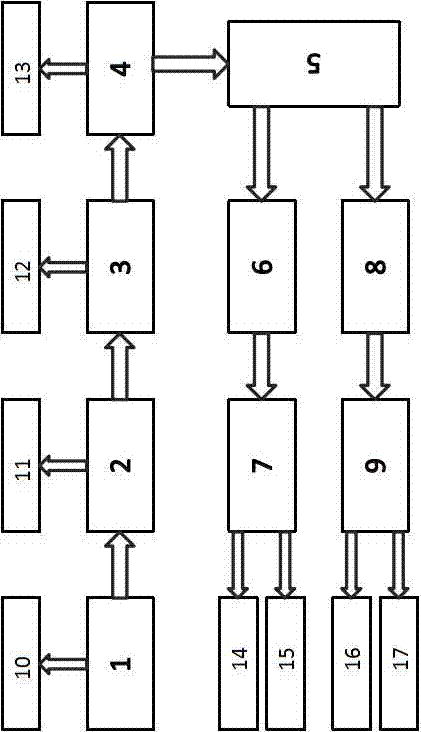Waste power lithium battery automated splitting all-components clean recovery method
A recycling method and technology for lithium batteries, applied in battery recycling, waste collector recycling, recycling technology, etc., can solve the problems of inability to apply large-scale and automated production, inability to achieve recycling effects, and low purity, and achieve easy scale. And automatic recycling production, to achieve the effect of clean production environment, simple and efficient process method
- Summary
- Abstract
- Description
- Claims
- Application Information
AI Technical Summary
Problems solved by technology
Method used
Image
Examples
Embodiment
[0038] Example: A batch of lithium iron phosphate waste power lithium battery cells with a typical capacity of 40Ah and a rectangular aluminum alloy casing are discharged and put into the storage device, and the feeding and conveying device sends them to the casing cutting device. Automatically complete the clamping of the single body, and the hydraulic mechanism pushes the double cutting saw blade of the shell cutting device to cut the two end faces of the single aluminum alloy shell at the same time, the upper end face cuts off the single conductive pole and the upper end cover, and the lower end face cuts off the single Bottom cover, at the same time recycle the materials at both ends of the cut shell through the slideway to the special storage box, complete the recovery of end cover materials (10) and dismantling of the battery cell shell (1), after the shell cutting and dismantling are completed, the shell cutting The hydraulic mechanism is reset, and the hydraulic cell pu...
PUM
 Login to View More
Login to View More Abstract
Description
Claims
Application Information
 Login to View More
Login to View More - R&D
- Intellectual Property
- Life Sciences
- Materials
- Tech Scout
- Unparalleled Data Quality
- Higher Quality Content
- 60% Fewer Hallucinations
Browse by: Latest US Patents, China's latest patents, Technical Efficacy Thesaurus, Application Domain, Technology Topic, Popular Technical Reports.
© 2025 PatSnap. All rights reserved.Legal|Privacy policy|Modern Slavery Act Transparency Statement|Sitemap|About US| Contact US: help@patsnap.com

